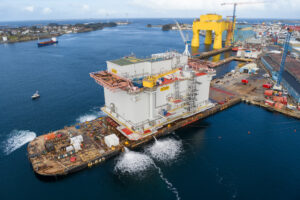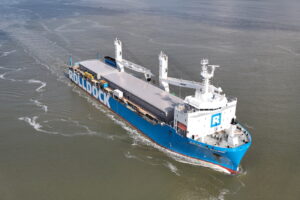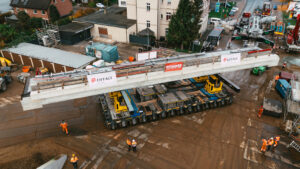Two Potain top-slewing tower cranes are proving essential in the construction of a constrained 14-story development at 109 E Wilson Street, Madison, Wisconsin. The mixed-use high-rise — featuring 244 residential units, a rooftop pool terrace, green roof, and multiple food and hospitality spaces — is being built to LEED Silver standards and is reshaping the city’s skyline.
Working within a zero-lot-line urban footprint bordered by a two-way street and active rail line, and directly beneath a restricted airport flight path, contractor Reynolds Rigging and Crane Service, Inc. selected a Potain MDT 489 M25 and a Potain MDT 219 J10 for their low-profile topless (flat-top) design and precise lifting capabilities.
The MDT 489 M25 was configured to its maximum freestanding height of 232 ft with a 197 ft jib, offering an 8.5 USt tip load capacity. The crane’s 27.6 USt maximum capacity and 262 ft jib option provided sufficient range and strength for heavy material handling at height. The MDT 219 J10, assembled using the MDT 489, utilized a 164 ft jib with a 4 USt tip load and 11 USt maximum capacity, optimized for freestanding compatibility and limited space on site.
Both cranes feature the Potain 2/4 automatic trolley reeving system, allowing seamless in-cab switching between 2-part and 4-part line configurations to adjust lifting performance mid-operation, minimizing downtime.
To address electrical constraints and sustainability goals, both models employed Potain’s Power Control system, optimizing energy consumption and reducing peak power draw. Modular crane components also reduced delivery truckloads and assembly time, significantly lowering carbon emissions.
“Only Potain’s flat-top designs provided the combination of airspace clearance, freestanding height, and lifting versatility required for this project,” said Nathanael Reynolds, EVP of Reynolds. “Their technical features enabled efficient execution under uniquely complex urban and regulatory constraints.”






